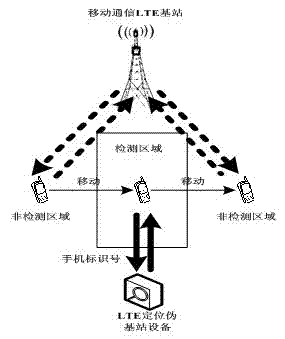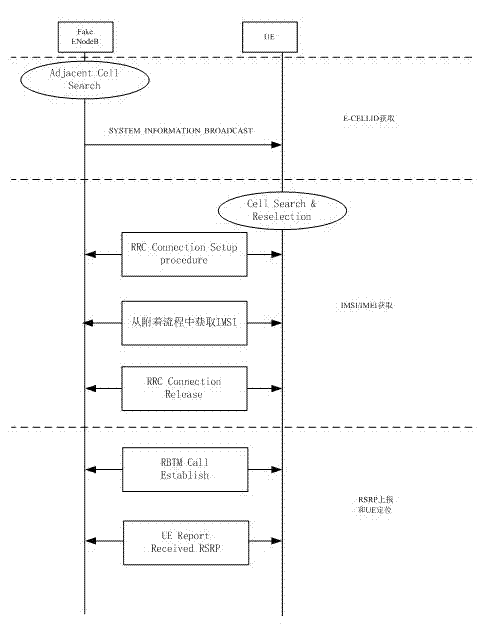Method for positioning long term evolution (LTE) terminal in cell range
A cell-wide, terminal technology, applied in location-based services, electrical components, wireless communications, etc.
- Summary
- Abstract
- Description
- Claims
- Application Information
AI Technical Summary
Problems solved by technology
Method used
Image
Examples
Embodiment Construction
[0073] The present invention uses the probe device to simulate the cell search process of the mobile phone to complete the acquisition of the E-CELLID, and then the probe device simulates an LTE base station to induce the UE to reside; in the process of the UE attaching process, the UE is instructed to report the IMSI / IMEI number; After the UE resides in the cell established by the pseudo-base station, the pseudo-base station initiates the establishment of a test loopback link, and then repeatedly instructs the UE to report the received RSRP measurement value. The larger the RSRP value, the closer the distance to the UE. Based on this, the location of the UE is judged.
[0074] After obtaining the E-CellID where the UE is located and the network location area where the UE is located, a detection area can be defined within the cell range. The network location area is an area where the actual base station equipment can cover and provide services, that is, the area of the cell, ...
PUM
 Login to View More
Login to View More Abstract
Description
Claims
Application Information
 Login to View More
Login to View More - R&D
- Intellectual Property
- Life Sciences
- Materials
- Tech Scout
- Unparalleled Data Quality
- Higher Quality Content
- 60% Fewer Hallucinations
Browse by: Latest US Patents, China's latest patents, Technical Efficacy Thesaurus, Application Domain, Technology Topic, Popular Technical Reports.
© 2025 PatSnap. All rights reserved.Legal|Privacy policy|Modern Slavery Act Transparency Statement|Sitemap|About US| Contact US: help@patsnap.com



